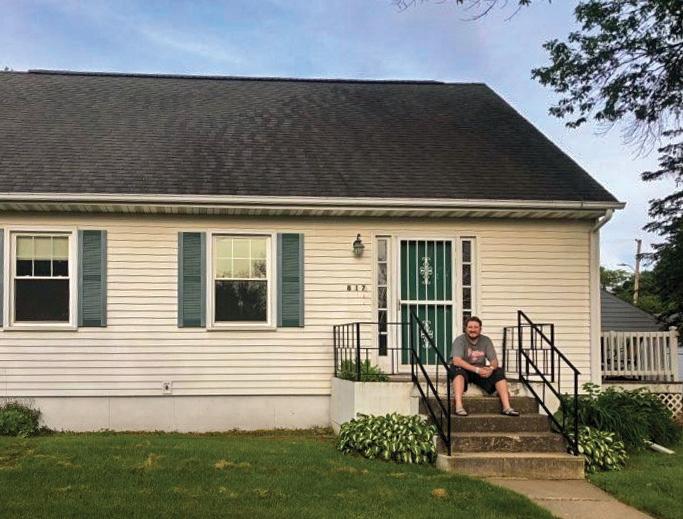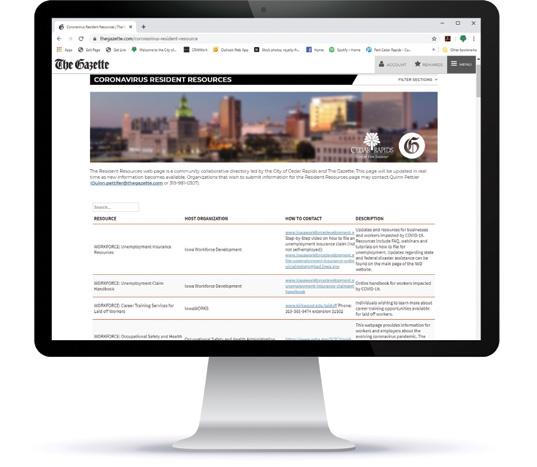
3 minute read
Sustainable Futures Start in the Home
We all have a housing story. Perhaps you know a recent college graduate trying to find a place they can afford while they start their career. Perhaps you have aging parents who need to downsize and find quality, affordable housing. Perhaps you know someone who needs financial support in order to complete necessary home repairs. You may even know someone who is struggling to find a permanent place to live. We all have a housing story that is personal and connected to us, our families, and our communities. Understanding these stories helps shape how we use resources and respond to resident needs. Part of the City’s sustainability plan includes improving existing housing for all income levels, increasing community awareness on resident resources, and pursuing partnerships to increase services and resources for those in need, including those experiencing homelessness.
Home Rehabilitation
Housing opportunities and access remain one of the most foundational elements to residents’ quality of life. A stable and affordable home unlocks other social, emotional, and mental benefits. Cedar Rapids continues to leverage partnerships with local agencies to help revitalize existing neighborhoods. The Affordable Housing Network has rehabilitated more than 100 homes in the Wellington Heights neighborhood on the southeast side, part of their Total Child program that utilizes local and state funding for neighborhood revitalization. Because of these property value improvements, access to tax increment financing became possible — which unlocked an additional $75,000 to continue home rehabilitation efforts in our core residential neighborhoods.

Before

After
In addition to the work being done by the Affordable Housing Network, the Neighborhood Finance Corporation makes it possible for more homeowners to make investments on their property. Neighborhood Finance Corporation encourages the purchase and renovation of homes in targeted Cedar Rapids neighborhoods, regardless of income level. Since the program launched in September 2018, more than 57 loans have closed, representing $2.5M in lending ($429,760 in forgivable loans and $1.3M in home renovations).
“I would 100 percent recommend NFC. It was refreshing to work with them. They were helpful from day one!” says resident Curtis, who decided to purchase his first home after securing a forgivable loan through NFC to make the necessary improvements.

Curtis at his home purchased with a forgivable loan through NFC.
Neighborhoods across the community are seeing renewed beautification and maintenance. Over time, these efforts will continue to accumulate and help transform our housing stock, attracting families, preserving property values, and supporting local business recruitment and retention efforts. To see if you qualify for home rehab assistance, visit cityofcr.com/nfc.
Community Resources
During the early months of the pandemic and in the long, slow months following the immediate impacts of the virus, the City worked hard to ensure residents had access to information on rental assistance, legal aid, mental health resources, transportation, and more. Cedar Rapids partnered with The Gazette on providing an organized, categorized list of resident resources they could find all in one place. Residents can find this master directory, which is updated constantly, at thegazette.com/ coronavirus-resident-resource. The City’s Affordable Housing Commission also quickly put together a resource sheet and distributed it to families through local landlords and also sent it through the mail in utility bills.

A resident resources page is available at thegazette.com/coronavirus-resident-resource
Housing Services staff made themselves available for town hall Zoom meetings, Facebook live events, and presentations to partner agencies such as the Civil Rights Commission. Topics were germane to the current COVID-19 crises, but also touched on a variety of housing and rental issues, such as ADA discrimination and accommodation, tenant rights, landlord rights and responsibilities, eviction moratorium, resident resources, financial advice, and even service animals.
Homelessness
Every year, the community’s overflow shelter usually closes in the spring. This year, with the unprecedented global pandemic hitting Iowa in March, the overflow shelter took on a different purpose, and remained open until the end of June. The City partnered with Linn County to continue these services and FEMA funding will cover the majority of costs. This facility became a refuge for those seeking shelter, medical care, and a safe place to find a meal. Partner agencies such as Willis Dady and Waypoint provided shelter logistics and services, ensuring people experiencing homelessness knew where to go in the event they had been exposed to the virus or were experiencing symptoms.







